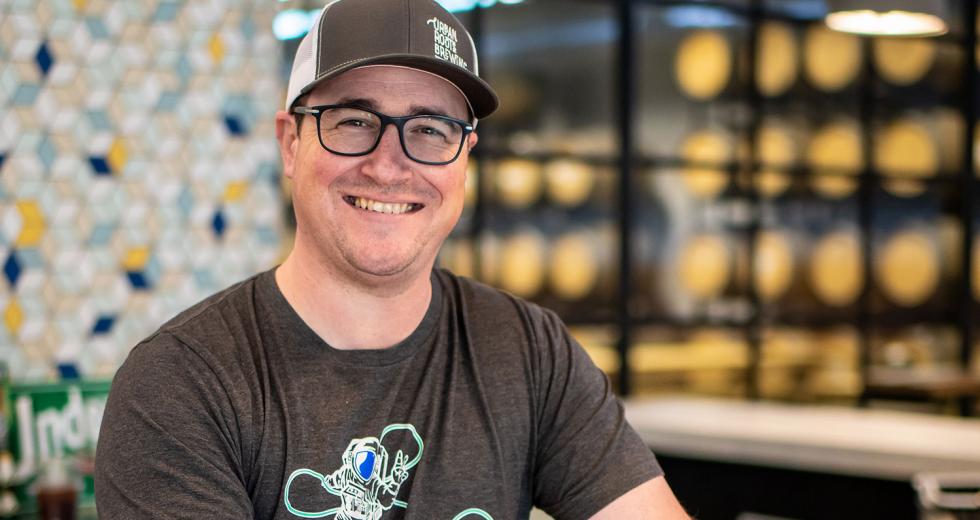Peter Hoey used to joke that he was a “closet lager drinker” in an ale-obsessed industry. As a beer drinker and brewer, the Urban Roots Brewing & Smokehouse cofounder cut his teeth on classic German styles like helles lagers and pilsners. But while the general American drinking public joins Hoey in preferring light, crisp, quaffable lagers over ales, craft breweries often give these cold-fermented brews the cold shoulder.
Whether clear, hazy or stuffed with lactose and fruit, India pale ales continue to rule craft beer. “People are drawn to the loudest beer, whereas I’m drawn to the beer I can have three or four of,” Hoey says. Most craft breweries offer one or two lagers for every dozen ales, but Urban Roots in Sacramento reflects the tastes of its brewmaster. “Oftentimes, breweries will have one pilsner (a pale lager) and eight IPAs, but we’ll have two IPAs and eight lagers.”
Craft lagers face a bias rooted in the winding history of American brewing. Beer geeks have long associated lagers with “fizzy yellow” macro beers like Budweiser and Miller Lite, while robust, flavor-forward ales typify craft beer. Lager brewing also presents logistical and technical challenges for smaller breweries — lagers take longer to brew than ales, and with fewer hops to hide any flaws, they also require more technical skill.
Only a handful of breweries in the Capital Region focus on these classic styles, yet some area brewers believe the balance is starting to shift back from ales to lagers. As the Sacramento craft beer scene continues to mature, will local drinkers abandon their ales and learn to love the lager?
A Brief History of the Lager-Verse
Urban Roots Brewing in Sacramento was designed with enough space
to make lagers, which take longer than ales to ferment.

Beers in the vast lager family range from pale helles to dark dunkels, with pilsners, marzens, bocks and beyond in between. Unlike warm-conditioned ales, lagers get conditioned at cold temperatures with bottom-fermenting yeast. Lagers originated in Germany, where brewers would store the beers underground during the summer months. From those underground cellars arose Oktoberfest traditions and the German biergarten culture.
“Lager is the typical beer in Germany. We don’t drink any IPAs,” says Kathrin Grosse, the German-born owner of Kathrin’s Biergarten in Rocklin. “When I came to the United States, it was so tough to find a microbrewery who does lager.” The beer list at Kathrin’s Biergarten features 13 types of lagers and just one IPA. Most of Kathrin’s lagers are European imports, with a handful brewed on-site.
With the advent of refrigerated tanks in the late 19th century, lagers proliferated around the world. To this day, 29 of the 31 best-selling beers in America are lagers. Most of the top beers are distributed by beverage conglomerates Anheuser-Busch InBev and MillerCoors.
Go to a craft brewery, though, and it’s a completely different story. Scanning the tap lists of local breweries, the average for lagers hovers around 10-15 percent, with most of the remainder taken up by ales. It’s no surprise that the three highest rated local breweries on the craft beer networking app Untappd are the ale-focused Slice Beer Co., Moonraker Brewing Co. and Moksa Brewing Co. The online tap lists of those three breweries showed only five lagers among 48 total beers.
“The beauty of the lager is in its delicacy. You have a light malt bill, very gently hopped. There’s nowhere to hide the flaws.”David Gull, founderNew Helvetia Brewing Company
Before the enactment of Prohibition in 1919, more than 4,000 breweries operated in the United States. Only about 750 breweries reopened after the repeal in 1933, and the American beer industry experienced mass consolidation and homogenization in the following decades. By 1983, only 80 American breweries were operated by the 51 companies that remained, and they mostly brewed the same German-style pale lager. The inevitable price wars drove breweries to use cheaper adjuncts, and the beers got progressively worse.
About 30-40 years ago, craft brewers rode to the rescue, returning flavor to the world of beer. Top-tier regional breweries like Sierra Nevada, Rogue Ales & Spirits and Deschutes Brewery focused on bold, robust, flavor-forward ales. In rebellion against the fizzy yellow mainstream, the craft beer faithful turned up their noses at traditional lager styles. “The whole marketing aspect was you were anti-macro beer, and macro beer was a lager,” Hoey says. “You couldn’t brew lager and be taken seriously.”
Craft beer consumers may lean toward ales and sours, but the less popular lagers tend to be the preferred beer of brewers, both for brewing and imbibing. Part of it stems from the fact that brewers need to taste beer throughout the brewing process, and lagers wreak less havoc on the palate than bitter ales. But the preference can also be attributed to the technical proficiency involved.
“It takes a lot more technical proficiency to make a clean lager than it does to make a good IPA,” Hoey says. “When I go into a brewery, what impresses me the most is not their barrel program or their barley wine or their IPA. If they have a nice, crisp, clean pilsner, that’s when I really see the brewers flex their skill.”
New Helvetia Brewing Company founder David Gull agrees. “The beauty of the lager is in its delicacy,” Gull says. “You have a light malt bill, very gently hopped. There’s nowhere to hide the flaws. A superhoppy IPA, you can mask some technical flaws in the hops.”
Ghosts of Lagers Past
David Gull says New Helvetia could brew three tanks of IPAs in
the time it takes to brew a single tank of lager.

Gull launched New Helvetia in 2014 with the intent to revive Buffalo Beer in Sacramento. With the Buffalo Brewing trademark taken, Gull chose another name specific to Sacramento’s history. He then set out to recreate the sort of helles-style German lager that Buffalo Brewery turned out in the 1890s when it was the largest production brewery west of the Mississippi.
New Helvetia committed to making Buffalo Craft Lager a core beer, but that commitment came at a price. Because yeast ferments slower at lower temperatures, lagers take longer to complete. “In the time it takes us to brew a single tank of lager, we could have turned out three tanks of IPAs,” Gull says. “Ingredientwise, it’s not expensive, it’s just the time and the opportunity cost that makes most brewers decide they don’t need a lager.”
Hoey specifically designed Urban Roots with enough space to make lagers. Breweries with less fermentation capacity, though, lean on ale styles like blondes, hefeweizens and kolschs for their lighter options.
Centuries-old lager styles also seem to fly in the face of the spirit of experimentation that permeates the world of craft beer. However, Davis beer stalwart Sudwerk Brewing Co. is making a conscious attempt to redefine the American lager. “We’ve been working at trying to develop a lager style to represent the region, and just innovate as much as we can within the lager realm,” says co-owner Ryan Fry.
Founded in 1989, Sudwerk originally abided by the Reinheitsgebot “purity law” traditions of Germany, which only permitted four ingredients in beer — water, hops, malted barley and yeast. But when Fry and co-owner Trenton Yackzan took over Sudwerk in 2013, ales were in fashion, and the Reinheitsgebot was kaput.
Rather than switch to ales, Sudwerk started pushing the lager envelope. Sudwerk turned out hoppy lagers, imperial lagers, fruited lagers, barrel-aged and sour lagers. “We just started pushing the lager footprints in a lot of different directions and showcasing what a lager could be outside of that typical macro lager or import-lager experience.”
Fry believes craft beer fans are growing tired of the “big beer arms race” of IPAs in recent years. “I’ve been seeing a lot more lagers out in the market lately,” he says. “Sacramento was one of the hotbeds of brewing pre-Prohibition, and it was focused around lager styles of beer. That’s starting to be resurrected here over the last few years.”
Recommended For You
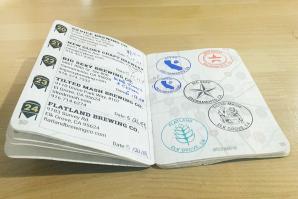
Brewery Passports Turn Beer Enthusiasts Into Stamp Collectors
Passports featuring dozens of breweries encourage consumers to explore new haunts in the Capital Region
These days, the Sacramento region’s beer scene is so large and bustling that a consumer may find it hard to keep tabs on it without a scorecard and roadmap.
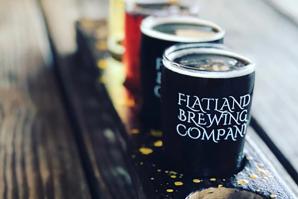
Beyond Bitter IPAs
Options abound for those who don’t want beer that ‘delivers a punch in the face’
While IPAs are better, more nuanced and more popular than ever, it’s also the style that continues to keep many would-be craft beer drinkers on the outside looking in.
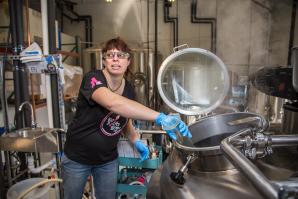
Queens of Craft Brew
Comstock’s speaks with three women brewery owners in the Capital Region
Comstock’s spoke with a few women brewery owners in the Capital Region about their diverse backgrounds, their paths to leadership and their thoughts on getting more women into craft beer.
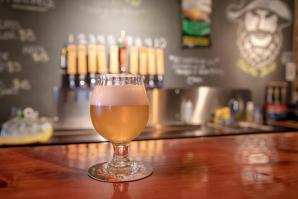
Land of Libations
Rancho Cordova’s Barrel District is on track for growth
A promotional effort created by the City and supported by the
Rancho Cordova Chamber of Commerce, the Barrel District is an
attempt to unite these craft beverage manufacturers and brand
Rancho Cordova as a distinct destination for beer and
spirits.



